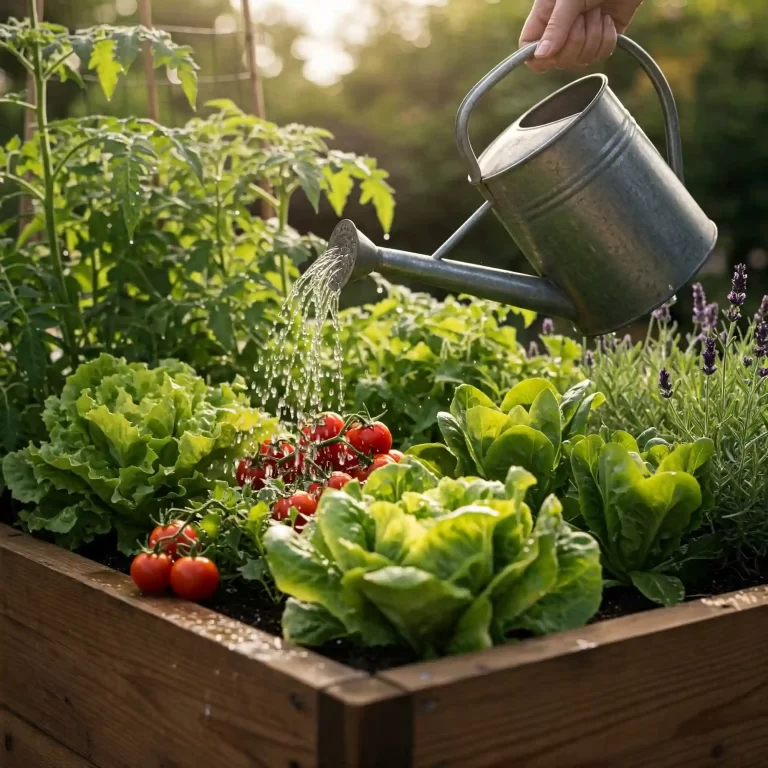Hydroponics is a method of growing plants without soil. Instead, plants are grown in a nutrient-rich water solution. This method of gardening has many benefits, including the ability to grow plants indoors, year-round, and in small spaces. Raised garden beds can be used to further enhance the benefits of hydroponics.
Benefits of Raised Garden Beds for Hydroponics
There are many benefits to using raised garden beds for hydroponics, including:
- Improved drainage: Raised garden beds provide better drainage than traditional garden beds, which can help to prevent root rot and other problems caused by standing water.
- Better aeration: The raised bed design allows for better aeration of the roots, which can help to promote plant growth.
- Easier access: Raised garden beds are easier to access than traditional garden beds, which can be helpful for people with limited mobility or who simply want to avoid bending over.
- More space: Raised garden beds can be stacked or placed vertically, which can help to save space in small areas.
- Less maintenance: Raised garden beds require less maintenance than traditional garden beds, as they are easier to water and fertilize.
- Improved appearance: Raised garden beds can add a touch of beauty to your home or garden, and they can also be used to create interesting and unique designs.
Types of Raised Garden Beds
There are many different types of raised garden beds available, so you can choose the one that best suits your needs. Some of the most popular types include:
- Wooden raised garden beds: Wooden raised garden beds are a popular choice because they are relatively easy to build and can be customized to any size or shape. However, wood can rot over time, so it is important to choose a rot-resistant wood, such as cedar or redwood.
- Metal raised garden beds: Metal raised garden beds are more durable than wooden raised garden beds, but they can also be more expensive. Metal raised garden beds can be made from a variety of materials, including aluminum, steel, and galvanized steel.
- Plastic raised garden beds: Plastic raised garden beds are lightweight and easy to move, but they can be less durable than wood or metal raised garden beds. Plastic raised garden beds can be made from a variety of materials, including PVC, polyethylene, and polypropylene.
- Cinder block raised garden beds: Cinder block raised garden beds are a low-cost option that is easy to build. However, cinder blocks can be heavy and difficult to move. Cinder block raised garden beds can be made from a variety of materials, including concrete, cinder blocks, and cinder blocks.
- Straw bale raised garden beds: Straw bale raised garden beds are a sustainable option that is easy to build. Straw bale raised garden beds can be made from a variety of materials, including straw bales, straw, and straw.
How to Build a Raised Garden Bed for Hydroponics
Building a raised garden bed for hydroponics is a relatively easy project that can be completed in a few hours. The following steps will show you how to build a simple wooden raised garden bed:
- Choose a location: Choose a location for your raised garden bed that receives at least six hours of sunlight per day. The location should also be level and have good drainage.
- Determine the size of your raised garden bed: The size of your raised garden bed will depend on the number of plants you plan to grow and the space you have available. A good rule of thumb is to make the raised garden bed at least 2 feet wide and 4 feet long.
- Gather your materials: You will need the following materials to build a raised garden bed:
- 4 pieces of 2×6 lumber, 8 feet long
- 8 pieces of 2×4 lumber, 2 feet long
- 16 pieces of 3/4-inch plywood, 2 feet by 4 feet
- 16 3-inch screws
- A drill
- A saw
- A level
- A tape measure
- Build the frame: Cut the 2×6 lumber into four pieces, each 8 feet long. Assemble the frame of the raised garden bed by attaching the 2×6 lumber together with the 3-inch screws. Make sure that the frame is square.
- Attach the plywood: Cut the 3/4-inch plywood into 16 pieces, each 2 feet by 4 feet. Attach the plywood to the inside of the frame with the 3-inch screws. Make sure that the plywood is flush with the top of the frame.
- Add a liner: Add a liner to the inside of the raised garden bed to prevent the water from leaking out. You can use a variety of materials for the liner, such as plastic sheeting, pond liner, or rubber liner.
- Add the hydroponic system: Add the hydroponic system to the raised garden bed. You can use a variety of hydroponic systems, such as a deep water culture system, a nutrient film technique system, or an aeroponic system.
- Plant your plants: Plant your plants in the hydroponic system. Make sure that the plants are properly spaced and that the roots are not touching the bottom of the raised garden bed.
- Water and fertilize your plants: Water and fertilize your plants according to the instructions for the hydroponic system you are using.
Conclusion
Raised garden beds can be a great way to enhance the benefits of hydroponics. Raised garden beds provide better drainage, aeration, and access than traditional garden beds. They also require less maintenance and can be used to create interesting and unique designs. If you are looking for a way to improve your hydroponic garden, consider using raised garden beds.
